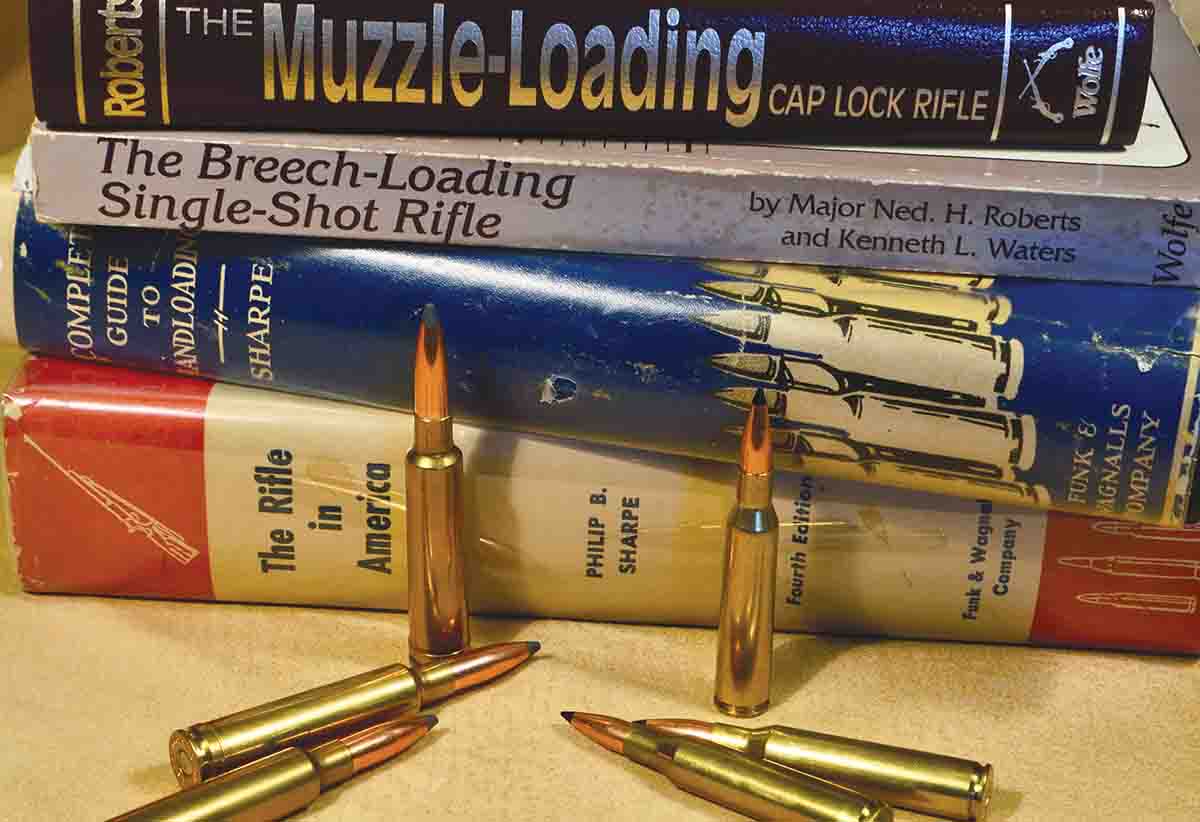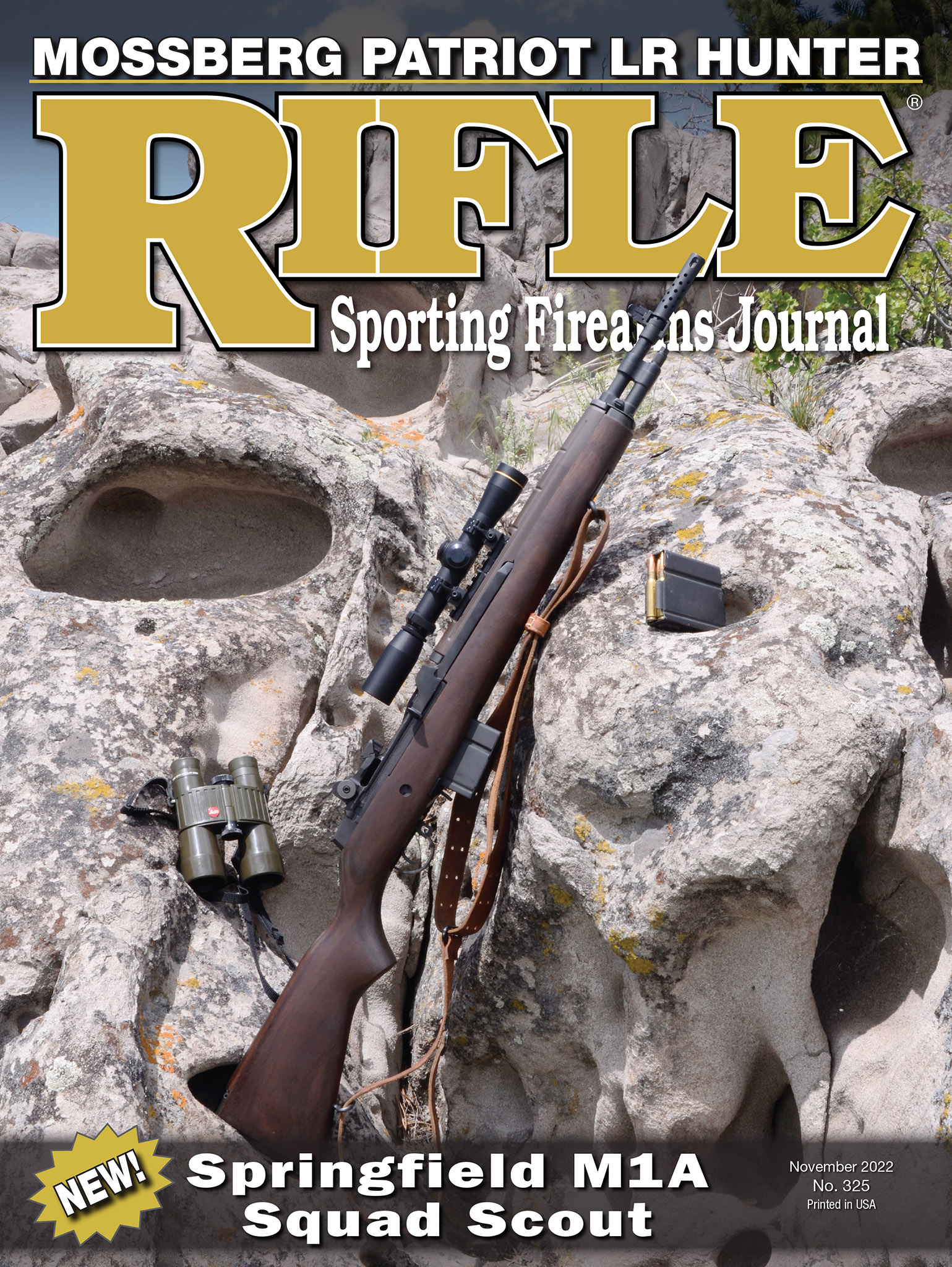Walnut Hill
Investment Theory One-Oh-One
column By: Terry Wieland | October, 22

This may have been why management decided to give the writers an inside look at what was involved in gestating a new rifle from conception to delivery.
The rifle was the “200 series,” a .22 built on a common basic action and offered as a lever (Model 250), slide-action (Model 270), or semiauto (Model 290). The brethren had already had a chance to try out some early production rifles, and the lackluster result may account for Gun Digest Editor John Amber’s reaction to the presentation, best described as a jaundiced eye.
The rifle had been in the works for seven years. Ray Holmes, vice president of research and engineering, told them he was always asked, “Why did it take so long?” “Here’s why,” he said. First, Winchester had hired three foreign specialists to head the design team, which then put in 49,000 hours (24 man-years) “at the drawing board.” This was followed by a further 40,000 hours (20 man-years) making test actions and prototype rifles. In all, more than 100 complete prototypes had been manufactured, they had fired a million rounds of ammunition in testing and spent, altogether, more than a million dollars to come up with the 200 series.
To put that in perspective, a million bucks in 1960 would be almost 10 million today.
Amber was skeptical of the whole process – and recounted it in detail in the 1963 Gun Digest – because the Model 250 he’d been sent to test, fitted with a scope and bench rested at 50 yards, delivered 10-shot groups in the range of 2½-3½ inches with a variety of match ammunition. Pretty lamentable.
How, Amber wondered, would they ever recover that huge investment. The answer is, they probably didn’t.
The 200 series was in production from 1963 to 1977. At first, they listed at around $55. By 1977, only the semiauto remained, at $88. A total of 2,171,000 were produced, of which 80 percent were semiautos.
Was it worth the effort? Hard to say. The 250 series now is not particularly coveted by Winchester collectors, and average specimens usually change hands for a few hundred dollars.
What struck me as I was reading about the work that went into it, is just how much it resembled two other notable developments by private individuals. Ned Roberts, with his .257 cartridge, and Philip B. Sharpe, who developed the 7x61 Sharpe & Hart.
One might dismiss Winchester’s Mister Holmes as a corporate man of the type that knows about production methods, but little about the products themselves, but that was most assuredly not true of either Roberts or Sharpe.
To take Roberts first, he was an extremely knowledgeable rifleman whose career more or less paralleled that of Col. Townsend Whelen. He joined a national guard unit in the late 1800s, shot on various rifle teams, and became expert in the rifles of his day. His book, The Muzzle-Loading Cap Lock Rifle, is a classic, reprinted many times; his later work, The Breech-Loading Single-Shot Rifle, was unfinished at the time of his death in 1948. Ken Waters completed it and it was published by Wolfe Publishing in 1987.
Roberts was a handloader and inveterate experimenter, and in the 1920s came up with the idea of bettering the performance of the popular .250-3000 – the hotshot of its day – by taking the 7x57 Mauser and necking it down to .25. There’s no question it was an excellent idea, and Roberts embarked upon a series of experiments in which he played with overall length, as well as neck length and shoulder angle, searching for the perfect combination of maximum accuracy combined with optimum velocity.
Unfortunately, Roberts was one of those guys who gets caught up in minutiae. According to later reports, in his experiments he expended, over the course of several years, 10,000 rounds of ammunition. He apparently became fixated on shoulder angle, convinced that a difference of one or two degrees this way or that would make all the difference. Of course, this required an endless succession of custom rifles as well as loading dies, all costing time and money.
There have been wildcatting shoulder-angle obsessives since that time, none of whom have ever convinced me that it made any appreciable difference, but then I’ve never become possessed by a desire to set benchrest records, either.
The story had a happy ending, of sorts. Remington recognized the worth of the cartridge, adopted it, and put it on the market as the .257 Roberts. One would think Ned Roberts would be gratified by this, since it’s every wildcatter’s dream, but no. Remington altered a few things, like neck length and shoulder angle, and he felt they had ruined his baby. He was, reportedly, rather bitter about it until the end of his life.
Then there’s Phil Sharpe. He was a later vintage than Roberts, but of the same ilk. An indefatigable experimenter who, having achieved a result, carried out the same experiment over and over, proving the same point.
Sharpe’s goal was the perfect big-game hunting cartridge for North America. He settled on 7mm and, it being the 1950s and the early era of the magnum, put it in a belted case. Sharpe also believed in the therapeutic effects of the correct shoulder angle, and made it very sharp; he gave his cartridge a distinct taper, which would aid feeding from a box magazine and also, since it would be a very hot number, minimize extraction difficulties.
Phil Sharpe was very well-known both in America and Europe as a result of his two massive tomes, Complete Guide to Handloading and The Rifle in America. Both first appeared in the late thirties and went through many printings of ever-expanding editions. To this day, no rifleman’s bookshelf is complete without them. Sharpe persuaded Norma of Sweden to make 7x61 ammunition, while Schultz & Larsen, the renowned Danish maker of target rifles, produced an all-new bolt action.
Later, Sharpe wrote that he spent $10,000 on cartridge development, but it’s difficult to see exactly where the money went. First of all, in shape and configuration, the new cartridge closely resembled the .275 H&H Magnum, which had been around since 1911. Same sharp shoulder, same pronounced taper. This puzzle is partly explained, however, by an account given years later by an acquaintance who said Sharpe was a man who, having carried out testing to prove something, then repeated the process, proving the same point, over and over.
These three cases differ in many respects, but are alike in one. An awful lot of time, effort, and money went into developments that were not exactly world-beating. The Winchester 200 series is unknown today to anyone except Winchester collectors; the .257 Roberts limps along with a small coterie of admirers (of whom I am one) while the 7x61 Sharpe & Hart was kept on life support by Norma years longer than it warranted. It was (and is) a fine, accurate, efficient cartridge, but that hardly makes it unique. If Phil Sharpe accomplished anything of lasting value with it, it was to lay the groundwork for the success of Remington’s 7mm Magnum when it appeared in 1962.
Looked at another way, though, Roberts and Sharpe carried on the long tradition of the private individual with a dream, advancing the cause of ballistics and shooting. Their legacy far overshadows that of Winchester’s Ray Holmes, his team of designers, and his million dollar budget. At least, it does to me.


